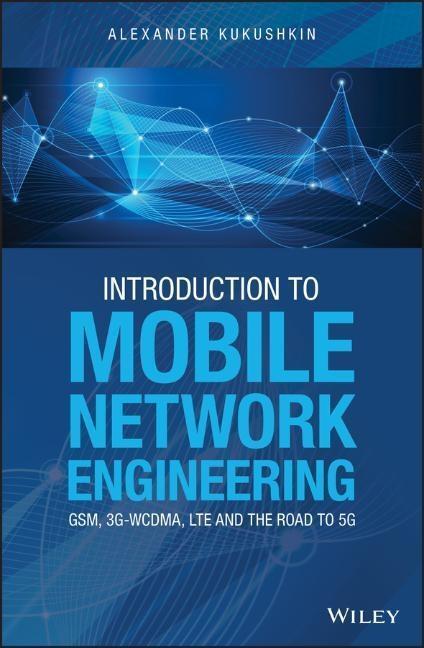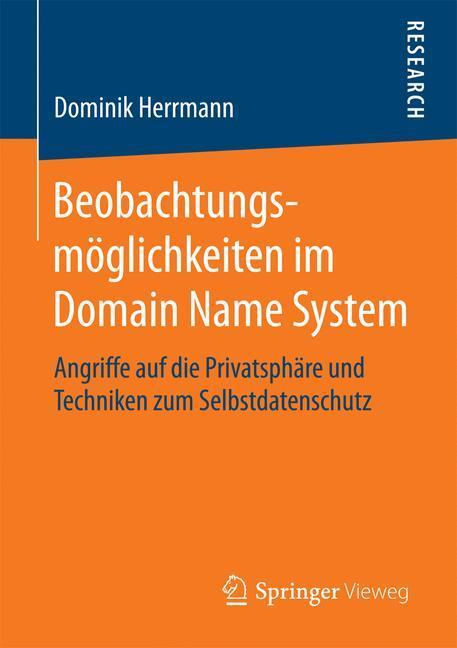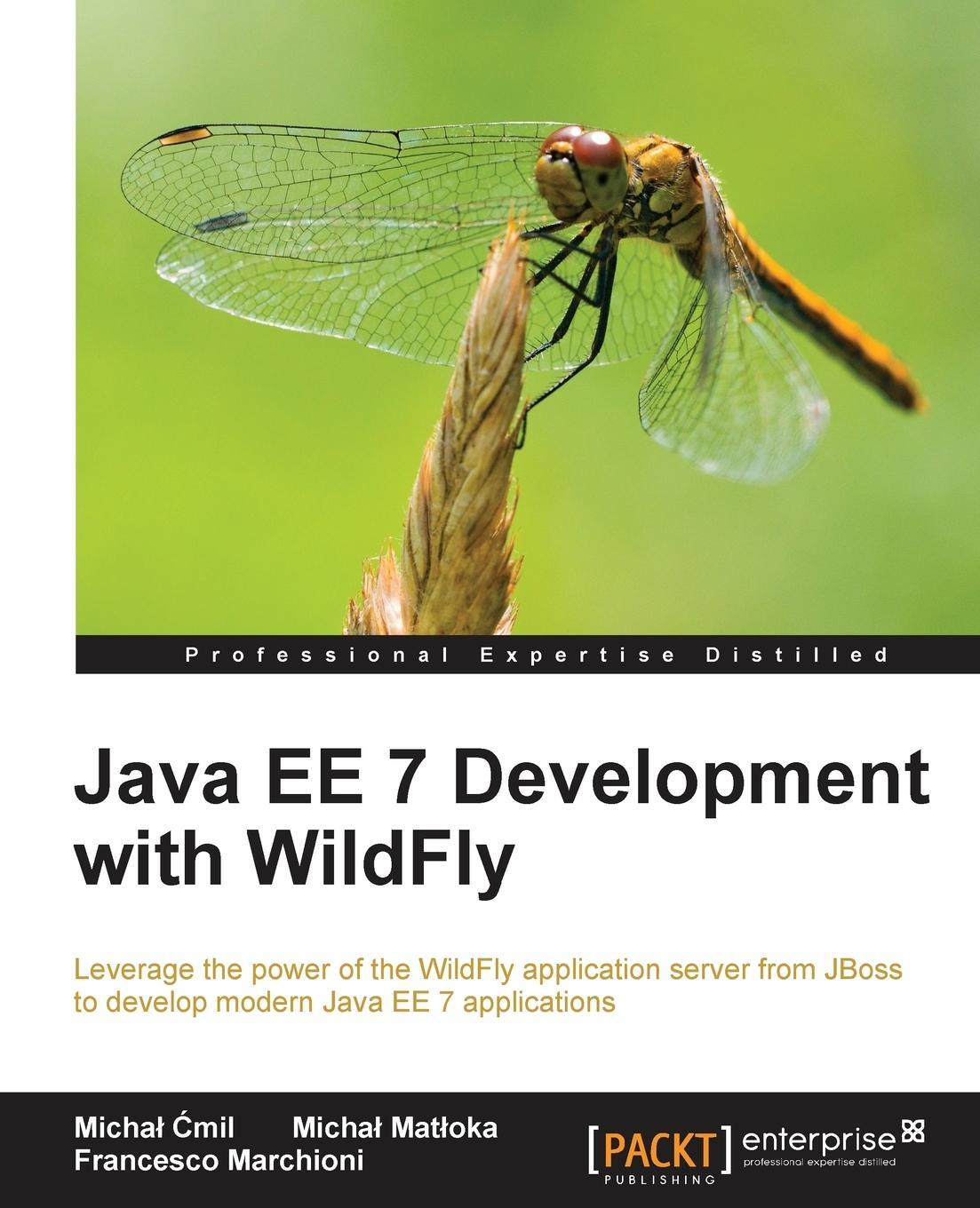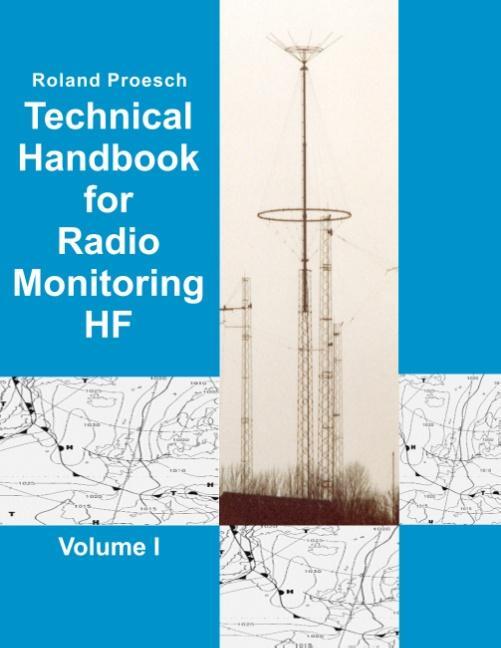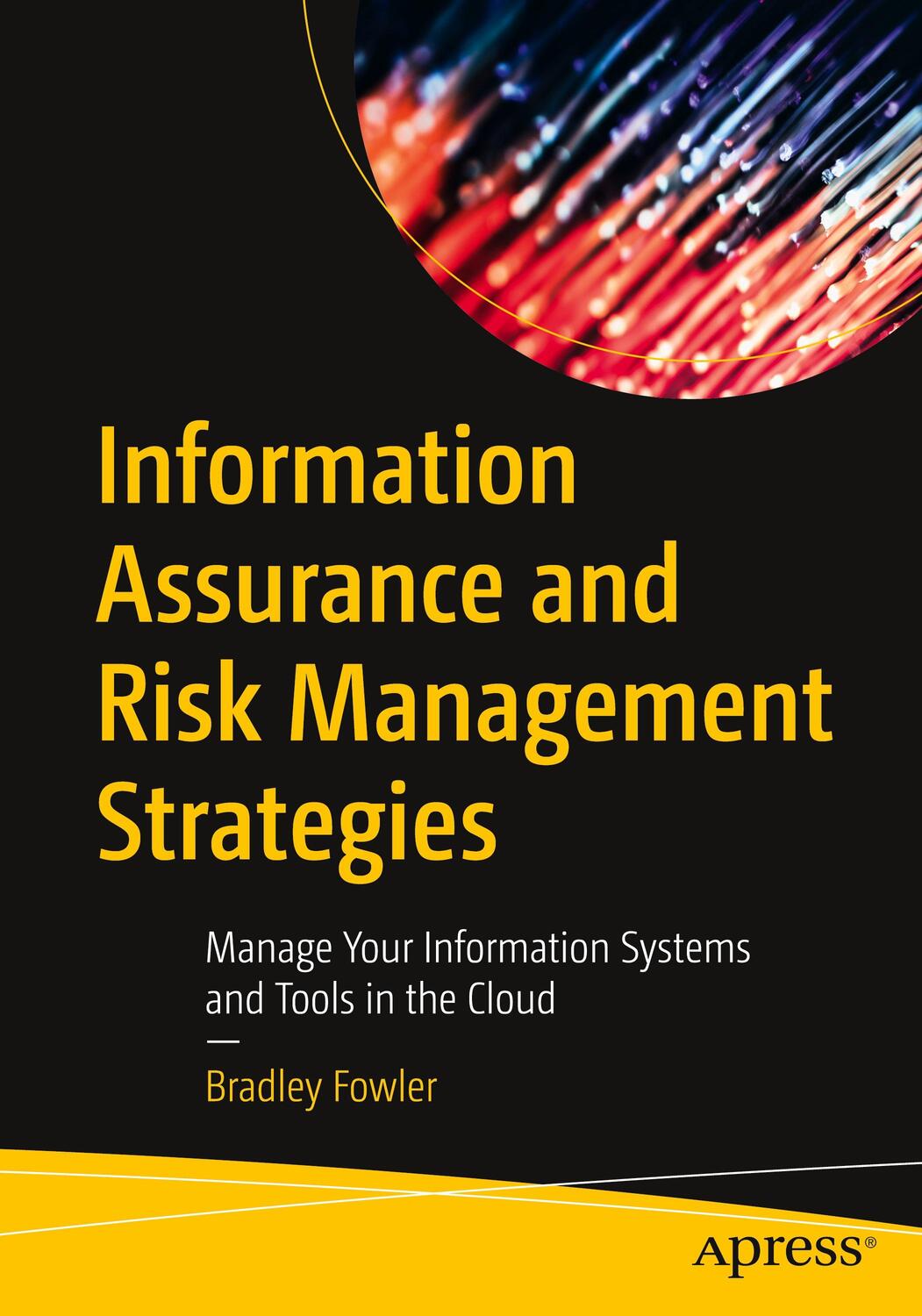130,50 €*
Versandkostenfrei per Post / DHL
Aktuell nicht verfügbar
Concentrating on three mobile communication technologies, GSM, 3G-WCDMA, and LTE--while majorly focusing on Radio Access Network (RAN) technology--this book describes principles of mobile radio technologies that are used in mobile phones and service providers' infrastructure supporting their operation. It introduces some basic concepts of mobile network engineering used in design and rollout of the mobile network. It then follows up with principles, design constraints, and more advanced insights into radio interface protocol stack, operation, and dimensioning for three major mobile network technologies: Global System Mobile (GSM) and third (3G) and fourth generation (4G) mobile technologies. The concluding sections of the book are concerned with further developments toward next generation of mobile network (5G). Those include some of the major features of 5G such as a New Radio, NG-RAN distributed architecture, and network slicing. The last section describes some key concepts that may bring significant enhancements in future technology and services experienced by customers.
Introduction to Mobile Network Engineering: GSM, 3G-WCDMA, LTE and the Road to 5G covers the types of Mobile Network by Multiple Access Scheme; the cellular system; radio propagation; mobile radio channel; radio network planning; EGPRS - GPRS/EDGE; Third Generation Network (3G), UMTS; High Speed Packet data access (HSPA); 4G-Long Term Evolution (LTE) system; LTE-A; and Release 15 for 5G.
* Focuses on Radio Access Network technologies which empower communications in current and emerging mobile network systems
* Presents a mix of introductory and advanced reading, with a generalist view on current mobile network technologies
* Written at a level that enables readers to understand principles of radio network deployment and operation
* Based on the author's post-graduate lecture course on Wireless Engineering
* Fully illustrated with tables, figures, photographs, working examples with problems and solutions, and section summaries highlighting the key features of each technology described
Written as a modified and expanded set of lectures on wireless engineering taught by the author, Introduction to Mobile Network Engineering: GSM, 3G-WCDMA, LTE and the Road to 5G is an ideal text for post-graduate and graduate students studying wireless engineering, and industry professionals requiring an introduction or refresher to existing technologies.
Concentrating on three mobile communication technologies, GSM, 3G-WCDMA, and LTE--while majorly focusing on Radio Access Network (RAN) technology--this book describes principles of mobile radio technologies that are used in mobile phones and service providers' infrastructure supporting their operation. It introduces some basic concepts of mobile network engineering used in design and rollout of the mobile network. It then follows up with principles, design constraints, and more advanced insights into radio interface protocol stack, operation, and dimensioning for three major mobile network technologies: Global System Mobile (GSM) and third (3G) and fourth generation (4G) mobile technologies. The concluding sections of the book are concerned with further developments toward next generation of mobile network (5G). Those include some of the major features of 5G such as a New Radio, NG-RAN distributed architecture, and network slicing. The last section describes some key concepts that may bring significant enhancements in future technology and services experienced by customers.
Introduction to Mobile Network Engineering: GSM, 3G-WCDMA, LTE and the Road to 5G covers the types of Mobile Network by Multiple Access Scheme; the cellular system; radio propagation; mobile radio channel; radio network planning; EGPRS - GPRS/EDGE; Third Generation Network (3G), UMTS; High Speed Packet data access (HSPA); 4G-Long Term Evolution (LTE) system; LTE-A; and Release 15 for 5G.
* Focuses on Radio Access Network technologies which empower communications in current and emerging mobile network systems
* Presents a mix of introductory and advanced reading, with a generalist view on current mobile network technologies
* Written at a level that enables readers to understand principles of radio network deployment and operation
* Based on the author's post-graduate lecture course on Wireless Engineering
* Fully illustrated with tables, figures, photographs, working examples with problems and solutions, and section summaries highlighting the key features of each technology described
Written as a modified and expanded set of lectures on wireless engineering taught by the author, Introduction to Mobile Network Engineering: GSM, 3G-WCDMA, LTE and the Road to 5G is an ideal text for post-graduate and graduate students studying wireless engineering, and industry professionals requiring an introduction or refresher to existing technologies.
ALEXANDER KUKUSHKIN, PHD, Australia has worked within the telecommunications industry for 15 years for such major mobile network vendors as Ericsson, Lucent, Nokia, Nokia Siemens Network, and has been involved in consulting, system engineering, technical management, presales and rollout of the turn-key mobile network solutions in many parts of the world, including: Australia, USA, Germany, East Asia, Eastern Europe and Central Asia.
Acknowledgements xix
Abbreviations xxi
1 Introduction 1
2 Types of Mobile Network by Multiple-Access Scheme 3
3 Cellular System 5
3.1 Historical Background 5
3.2 Cellular Concept 5
3.3 Carrier-to-Interference Ratio 6
3.4 Formation of Clusters 8
3.5 Sectorization 9
3.6 Frequency Allocation 10
3.7 Trunking Effect 11
3.8 Erlang Formulas 13
3.9 Erlang B Formula 13
3.10 Worked Examples 14
3.10.1 Problem 1 14
3.10.2 Problem 2 16
3.10.3 Problem 3 16
4 Radio Propagation 19
4.1 Propagation Mechanisms 19
4.1.1 Free-Space Propagation 19
4.1.2 Propagation Models for Path Loss (Global Mean) Prediction 22
5 Mobile Radio Channel 27
5.1 Channel Characterization 28
5.1.1 Narrowband Flat Channel 31
5.1.2 Wideband Frequency Selective Channel 31
5.1.3 Doppler Shift 34
5.2 Worked Examples 36
5.2.1 Problem 1 36
5.2.2 Problem 2 36
5.3 Fading 36
5.3.1 Shadowing/Slow Fading 37
5.3.2 Fast Fading/Rayleigh Fading 40
5.4 Diversity to Mitigate Multipath Fading 42
5.4.1 Space and Polarization Diversity 42
5.5 Worked Examples 44
5.5.1 Problem 1 44
5.5.2 Problem 2 44
5.5.3 Problem 3 45
5.6 Receiver Noise Factor (Noise Figure) 45
6 Radio Network Planning 49
6.1 Generic Link Budget 49
6.1.1 Receiver Sensitivity Level 50
6.1.2 Design Level 50
6.1.2.1 Rayleigh Fading Margin 51
6.1.2.2 Lognormal Fading Margin 51
6.1.2.3 Body Loss 51
6.1.2.4 Car Penetration Loss 51
6.1.2.5 Design Level 51
6.1.2.6 Building Penetration Loss 52
6.1.2.7 Outdoor-to-Indoor Design Level 52
6.1.3 Power Link Budget 52
6.1.4 Power Balance 53
6.2 Worked Examples 56
6.2.1 Problem 1 56
6.2.2 Problem 2 57
6.2.3 Problem 3 58
7 Global System Mobile, GSM, 2G 59
7.1 General Concept for GSM System Development 59
7.2 GSM System Architecture 59
7.2.1 Location Area Identity (LAI) 62
7.2.2 The SIM Concept 63
7.2.3 User Addressing in the GSM Network 63
7.2.4 International Mobile Station Equipment Identity (IMEI) 63
7.2.5 International Mobile Subscriber Identity (IMSI) 64
7.2.6 Different Roles of MSISDN and IMSI 64
7.2.7 Mobile Station Routing Number 64
7.2.8 Calls to Mobile Terminals 65
7.2.9 Temporary Mobile Subscriber Identity (TMSI) 66
7.2.10 Security-Related Network Functions: Authentication and Encryption 66
7.2.11 Call Security 67
7.2.12 Operation and Maintenance Security 69
7.3 Radio Specifications 69
7.3.1 Spectrum Efficiency 69
7.3.2 Access Technology 71
7.3.3 MAHO and Measurements Performed by Mobile 72
7.3.4 Time Slot and Burst 73
7.3.4.1 Normal Burst 74
7.3.4.2 Frequency Correction Burst (FB) 74
7.3.4.3 Synchronization Burst 75
7.3.4.4 Access Burst 75
7.3.4.5 Dummy Burst 75
7.3.5 GSM Adaptation to a Wideband Propagation Channel 76
7.3.5.1 Training Sequence and Equalization 76
7.3.5.2 The Channel Equalization 77
7.3.5.3 Diversity Against Fast Fading 78
7.3.5.4 Frequency Hopping 79
7.4 Background for the Choice of Radio Parameters 81
7.4.1 Guard Period, Timing Advance 83
7.5 Communication Channels in GSM 84
7.5.1 Traffic Channels (TCHs) 84
7.5.2 Control Channels 85
7.5.2.1 Common Control Channels 85
7.5.2.2 Dedicated Control Channels 86
7.6 Mapping the Logical Channels onto Physical Channels 86
7.6.1 Frame Format 87
7.6.2 Transmission of User Information: Fast Associated Control Channel 88
7.6.2.1 Data Rates 88
7.6.3 Signalling Multiframe, 51-Frame Multiframe 88
7.6.4 Synchronization 89
7.6.4.1 Frequency Synchronization 90
7.6.4.2 Time Synchronization 90
7.6.5 Signalling Procedures over the Air Interface 90
7.6.5.1 Synchronization to the Base Station 90
7.6.5.2 Registering With the Base Station 91
7.6.5.3 Call Setup 91
7.7 Signalling During a Call 93
7.7.1 Measuring the Signal Levels from Adjacent Cells 93
7.7.2 Handover 94
7.7.2.1 Intra-Cell and Inter-Cell Handover 95
7.7.2.2 Intra- and Inter-BSC Handover 95
7.7.2.3 Intra- and Inter-MSC Handover 95
7.7.2.4 Intra- and Inter-PLMN Handover 95
7.7.2.5 Handover Triggering 95
7.7.3 Power Control 96
7.8 Signal Processing Chain 97
7.8.1 Speech and Channel Coding 97
7.8.2 Reordering and Interleaving of the TCH 99
7.9 Estimating Required Signalling Capacity in the Cell 100
7.9.1 SDCCH Configuration 100
7.9.2 Worked Example 101
7.9.2.1 Problem 1 101
References 102
8 EGPRS: GPRS/EDGE 103
8.1 GPRS Support Nodes 103
8.2 GPRS Interfaces 104
8.3 GPRS Procedures in Packet Call Setups 104
8.4 GPRS Mobility Management 105
8.4.1 Mobility Management States 106
8.4.1.1 IDLE State 106
8.4.1.2 READY State 106
8.4.1.3 STANDBY State 106
8.4.2 PDP Context Activation 107
8.4.3 Location Management 108
8.5 Layered Overview of the Radio Interface 108
8.5.1 SNDP 108
8.5.2 Layer Services 109
8.5.3 Radio Link Layer 110
8.5.3.1 RLC Block Structure 110
8.5.4 GPRS Logical Channels 111
8.5.5 Mapping to Physical GPRS Channels 111
8.5.6 Channel Sharing 112
8.5.6.1 Downlink Radio Channel 113
8.5.6.2 Uplink Radio Channel 113
8.5.7 TBF 113
8.5.7.1 TBF Establishment 113
8.5.7.2 DL TBF Establishment 113
8.5.8 EGPRS Channel Coding and Modulation 15
8.6 GPRS/GSM Territory in a Base-Station Transceiver 115
8.6.1 PS Capacity in the Base Station/Cell 116
8.7 Summary 118
References 119
9 Third Generation Network (3G), UMTS 121
9.1 The WCDMA Concept 123
9.1.1 Spreading (Channelization) 124
9.1.2 Scrambling 127
9.1.3 Multiservice Capacity 128
9.1.4 Power Control 129
9.1.4.1 Open-Loop Power Control 130
9.1.4.2 Outer-Loop Power Control 130
9.1.5 Handover 132
9.1.5.1 Softer Handover 132
9.1.5.2 Other Handovers 134
9.1.5.3 Compressed Mode 134
9.1.6 RAKE Reception 135
9.2 Major Parameters of 3G WCDMA Air Interface 136
9.3 Spectrum Allocation for 3G WCDMA 136
9.4 3G Services 138
9.4.1 Bearer Service and QoS 138
9.5 UMTS Reference Network Architecture and Interfaces 140
9.5.1 The NodeB (Base Station) Functions in the 3G Network 141
9.5.2 Role of the RNC in 3G Network 141
9.6 Air-Interface Architecture and Processing 142
9.6.1 Physical Layer (Layer 1) 144
9.6.2 Medium Access Control (MAC) on Layer 2 144
9.6.3 Radio Link Control (RLC) on Layer 2 145
9.6.4 RRC on Layer 3 in the Control Plane 145
9.7 Channels on the Air Interface 146
9.7.1 Logical Channels 146
9.7.2 Transport Channels 146
9.7.2.1 Dedicated Transport Channel (DCH) 147
9.7.2.2 Common Transport Channels 147
9.7.3 Physical Channels and Physical Signals 148
9.7.4 Parameters of the Transport Channel 148
9.8 Physical-Layer Procedures 150
9.8.1 Processing of Transport Blocks 151
9.8.2 Spreading and Modulation 154
9.8.3 Modulation Scheme in UTRAN FDD 155
9.8.4 Composition of the Physical Channels 157
9.8.4.1 Dedicated Physical Channel 157
9.8.4.2 Common Downlink Physical Channels 160
9.9 RRC States 162
9.9.1 Idle Mode 162
9.9.2 RRC Connected Mode 164
9.9.3 RRC Connection Procedures 165
9.9.4 RRC State Transition Cases 166
9.10 RRM Functions 167
9.10.1 Admission Control Principle 167
9.10.2 Load/Congestion Control 168
9.10.3 Code Management 168
9.10.4 Packet Scheduling 168
9.11 Initial Access to the Network 169
9.12 Summary 170
References 171
10 High-Speed Packet Data Access (HSPA) 173
10.1 HSDPA, High-Speed Downlink Packet Data Access 173
10.2 HSPA RRM Functions 175
10.2.1 Channel-Dependent Scheduling for HS-DSCH 175
10.2.2 Rate Control, Dynamic Resource Allocation, Adaptive Modulation and Coding 176
10.2.3 Hybrid-ARQ with Soft Combining, HARQ 176
10.2.4 Retransmission Mechanism in the NodeB 176
10.2.5 Impact to Protocol Architecture 177
10.2.6 HARQ Schemes 178
10.3 MAC-hs and Physical-Layer Processing 181
10.4 HSDPA Channels 182
10.4.1 High-Speed Downlink Shared Channel (HS-DSCH) 182
10.4.2 HSDPA Control Channels 183
10.4.2.1 Fractional Downlink Power Control Channel 184
10.4.3 HS-DSCH Link Adaptation 184
10.5 HSUPA (Enhanced Uplink, E-DCH) 189
10.5.1 Control Signalling 190
10.5.2 Scheduling 190
10.6 Air-Interface Dimensioning 192
10.6.1 Input Parameters and Requirements 192
10.6.2 Traffic Demand Estimation 193
10.6.2.1 PS Data Services (Release 99) 193
10.6.2.2 HSPA Data Services 193
10.6.3 Standard Traffic Model 194
10.6.4 Link Budgets 195
10.6.4.1 Uplink Load Factor 196
10.6.4.2 Downlink Load Factor 197
10.6.4.3 Link Budget for R99 Bearers 198
10.6.4.4 Link Budget for HSPA 199
10.6.4.5 Results of Link Budget: Cell Range Calculation, Balancing UL with DL 199
10.6.4.6 Link Budget for Common Pilot Channel Signal 200
10.6.4.7 Link Budget Calculation for the Shared Release 99 and HSDPA Carriers 200
10.6.5 Uplink Capacity Estimation 201
10.6.5.1 Required Bandwidth and Load for Multiple Bearers with GOS Considerations 202
10.6.5.2 Simplified Estimation of HSDPA Throughput Capacity 202
10.7 Summary 203
References 204
11 4G-Long Term Evolution (LTE) System 205
11.1 Introduction 205
11.2 Architecture of an Evolved Packet System 206
11.3 LTE Integration with Existing 2G/3G Network 207
11.3.1 EPS Reference Points and Interfaces 208
11.4 E-UTRAN Interfaces 209
11.5 User Equipment 210
11.5.1 LTE UE Category 210
11.6 QoS in LTE 211
11.7 LTE Security 212
11.8 LTE Mobility 214
11.8.1 Idle Mode Mobility 214
11.8.2 ECM-CONNECTED Mode Mobility 215
11.8.3 Mobility Anchor 216
11.8.4 Inter-eNB Handover 216
11.8.5 3GPP Inter-RAT Handover 218
11.8.6 Differences in E-UTRAN and UTRAN Mobility 218
11.9 LTE Radio Interface 219
11.10 Principle of OFDM 220
11.11 OFDM Implementation using IFFT/FFT Processing 223
11.12 Cyclic Prefix 223
11.13 Channel Estimation and Reference Symbols 225
11.14 OFDM Subcarrier Spacing 227
11.15 Output RF Spectrum Emissions 227
11.16 LTE Multiple-Access Scheme, OFDMA 228
11.17 Single-Carrier FDMA (SC-FDMA) 229
11.18 OFDMA versus SC-FDMA Operation 230
11.19 SC-FDMA Receiver 231
11.20 User Multiplexing with DFTS-OFDM 231
11.21 MIMO Techniques 232
11.21.1 Precoding 234
11.21.2 Cyclic Delay Diversity (CDD) 236
11.22 Link Adaptation and Frequency Domain Packet Scheduling 237
11.23 Radio Protocol Architecture 238
11.23.1 User Plane 239
11.23.2...
| Erscheinungsjahr: | 2018 |
|---|---|
| Fachbereich: | Nachrichtentechnik |
| Genre: | Technik |
| Rubrik: | Naturwissenschaften & Technik |
| Medium: | Buch |
| Seiten: | 416 |
| Inhalt: | 416 S. |
| ISBN-13: | 9781119484172 |
| ISBN-10: | 1119484170 |
| Sprache: | Englisch |
| Einband: | Gebunden |
| Autor: | Kukushkin, Alexander |
| Hersteller: | Turner Publishing Company |
| Maße: | 244 x 175 x 25 mm |
| Von/Mit: | Alexander Kukushkin |
| Erscheinungsdatum: | 12.09.2018 |
| Gewicht: | 0,78 kg |
ALEXANDER KUKUSHKIN, PHD, Australia has worked within the telecommunications industry for 15 years for such major mobile network vendors as Ericsson, Lucent, Nokia, Nokia Siemens Network, and has been involved in consulting, system engineering, technical management, presales and rollout of the turn-key mobile network solutions in many parts of the world, including: Australia, USA, Germany, East Asia, Eastern Europe and Central Asia.
Acknowledgements xix
Abbreviations xxi
1 Introduction 1
2 Types of Mobile Network by Multiple-Access Scheme 3
3 Cellular System 5
3.1 Historical Background 5
3.2 Cellular Concept 5
3.3 Carrier-to-Interference Ratio 6
3.4 Formation of Clusters 8
3.5 Sectorization 9
3.6 Frequency Allocation 10
3.7 Trunking Effect 11
3.8 Erlang Formulas 13
3.9 Erlang B Formula 13
3.10 Worked Examples 14
3.10.1 Problem 1 14
3.10.2 Problem 2 16
3.10.3 Problem 3 16
4 Radio Propagation 19
4.1 Propagation Mechanisms 19
4.1.1 Free-Space Propagation 19
4.1.2 Propagation Models for Path Loss (Global Mean) Prediction 22
5 Mobile Radio Channel 27
5.1 Channel Characterization 28
5.1.1 Narrowband Flat Channel 31
5.1.2 Wideband Frequency Selective Channel 31
5.1.3 Doppler Shift 34
5.2 Worked Examples 36
5.2.1 Problem 1 36
5.2.2 Problem 2 36
5.3 Fading 36
5.3.1 Shadowing/Slow Fading 37
5.3.2 Fast Fading/Rayleigh Fading 40
5.4 Diversity to Mitigate Multipath Fading 42
5.4.1 Space and Polarization Diversity 42
5.5 Worked Examples 44
5.5.1 Problem 1 44
5.5.2 Problem 2 44
5.5.3 Problem 3 45
5.6 Receiver Noise Factor (Noise Figure) 45
6 Radio Network Planning 49
6.1 Generic Link Budget 49
6.1.1 Receiver Sensitivity Level 50
6.1.2 Design Level 50
6.1.2.1 Rayleigh Fading Margin 51
6.1.2.2 Lognormal Fading Margin 51
6.1.2.3 Body Loss 51
6.1.2.4 Car Penetration Loss 51
6.1.2.5 Design Level 51
6.1.2.6 Building Penetration Loss 52
6.1.2.7 Outdoor-to-Indoor Design Level 52
6.1.3 Power Link Budget 52
6.1.4 Power Balance 53
6.2 Worked Examples 56
6.2.1 Problem 1 56
6.2.2 Problem 2 57
6.2.3 Problem 3 58
7 Global System Mobile, GSM, 2G 59
7.1 General Concept for GSM System Development 59
7.2 GSM System Architecture 59
7.2.1 Location Area Identity (LAI) 62
7.2.2 The SIM Concept 63
7.2.3 User Addressing in the GSM Network 63
7.2.4 International Mobile Station Equipment Identity (IMEI) 63
7.2.5 International Mobile Subscriber Identity (IMSI) 64
7.2.6 Different Roles of MSISDN and IMSI 64
7.2.7 Mobile Station Routing Number 64
7.2.8 Calls to Mobile Terminals 65
7.2.9 Temporary Mobile Subscriber Identity (TMSI) 66
7.2.10 Security-Related Network Functions: Authentication and Encryption 66
7.2.11 Call Security 67
7.2.12 Operation and Maintenance Security 69
7.3 Radio Specifications 69
7.3.1 Spectrum Efficiency 69
7.3.2 Access Technology 71
7.3.3 MAHO and Measurements Performed by Mobile 72
7.3.4 Time Slot and Burst 73
7.3.4.1 Normal Burst 74
7.3.4.2 Frequency Correction Burst (FB) 74
7.3.4.3 Synchronization Burst 75
7.3.4.4 Access Burst 75
7.3.4.5 Dummy Burst 75
7.3.5 GSM Adaptation to a Wideband Propagation Channel 76
7.3.5.1 Training Sequence and Equalization 76
7.3.5.2 The Channel Equalization 77
7.3.5.3 Diversity Against Fast Fading 78
7.3.5.4 Frequency Hopping 79
7.4 Background for the Choice of Radio Parameters 81
7.4.1 Guard Period, Timing Advance 83
7.5 Communication Channels in GSM 84
7.5.1 Traffic Channels (TCHs) 84
7.5.2 Control Channels 85
7.5.2.1 Common Control Channels 85
7.5.2.2 Dedicated Control Channels 86
7.6 Mapping the Logical Channels onto Physical Channels 86
7.6.1 Frame Format 87
7.6.2 Transmission of User Information: Fast Associated Control Channel 88
7.6.2.1 Data Rates 88
7.6.3 Signalling Multiframe, 51-Frame Multiframe 88
7.6.4 Synchronization 89
7.6.4.1 Frequency Synchronization 90
7.6.4.2 Time Synchronization 90
7.6.5 Signalling Procedures over the Air Interface 90
7.6.5.1 Synchronization to the Base Station 90
7.6.5.2 Registering With the Base Station 91
7.6.5.3 Call Setup 91
7.7 Signalling During a Call 93
7.7.1 Measuring the Signal Levels from Adjacent Cells 93
7.7.2 Handover 94
7.7.2.1 Intra-Cell and Inter-Cell Handover 95
7.7.2.2 Intra- and Inter-BSC Handover 95
7.7.2.3 Intra- and Inter-MSC Handover 95
7.7.2.4 Intra- and Inter-PLMN Handover 95
7.7.2.5 Handover Triggering 95
7.7.3 Power Control 96
7.8 Signal Processing Chain 97
7.8.1 Speech and Channel Coding 97
7.8.2 Reordering and Interleaving of the TCH 99
7.9 Estimating Required Signalling Capacity in the Cell 100
7.9.1 SDCCH Configuration 100
7.9.2 Worked Example 101
7.9.2.1 Problem 1 101
References 102
8 EGPRS: GPRS/EDGE 103
8.1 GPRS Support Nodes 103
8.2 GPRS Interfaces 104
8.3 GPRS Procedures in Packet Call Setups 104
8.4 GPRS Mobility Management 105
8.4.1 Mobility Management States 106
8.4.1.1 IDLE State 106
8.4.1.2 READY State 106
8.4.1.3 STANDBY State 106
8.4.2 PDP Context Activation 107
8.4.3 Location Management 108
8.5 Layered Overview of the Radio Interface 108
8.5.1 SNDP 108
8.5.2 Layer Services 109
8.5.3 Radio Link Layer 110
8.5.3.1 RLC Block Structure 110
8.5.4 GPRS Logical Channels 111
8.5.5 Mapping to Physical GPRS Channels 111
8.5.6 Channel Sharing 112
8.5.6.1 Downlink Radio Channel 113
8.5.6.2 Uplink Radio Channel 113
8.5.7 TBF 113
8.5.7.1 TBF Establishment 113
8.5.7.2 DL TBF Establishment 113
8.5.8 EGPRS Channel Coding and Modulation 15
8.6 GPRS/GSM Territory in a Base-Station Transceiver 115
8.6.1 PS Capacity in the Base Station/Cell 116
8.7 Summary 118
References 119
9 Third Generation Network (3G), UMTS 121
9.1 The WCDMA Concept 123
9.1.1 Spreading (Channelization) 124
9.1.2 Scrambling 127
9.1.3 Multiservice Capacity 128
9.1.4 Power Control 129
9.1.4.1 Open-Loop Power Control 130
9.1.4.2 Outer-Loop Power Control 130
9.1.5 Handover 132
9.1.5.1 Softer Handover 132
9.1.5.2 Other Handovers 134
9.1.5.3 Compressed Mode 134
9.1.6 RAKE Reception 135
9.2 Major Parameters of 3G WCDMA Air Interface 136
9.3 Spectrum Allocation for 3G WCDMA 136
9.4 3G Services 138
9.4.1 Bearer Service and QoS 138
9.5 UMTS Reference Network Architecture and Interfaces 140
9.5.1 The NodeB (Base Station) Functions in the 3G Network 141
9.5.2 Role of the RNC in 3G Network 141
9.6 Air-Interface Architecture and Processing 142
9.6.1 Physical Layer (Layer 1) 144
9.6.2 Medium Access Control (MAC) on Layer 2 144
9.6.3 Radio Link Control (RLC) on Layer 2 145
9.6.4 RRC on Layer 3 in the Control Plane 145
9.7 Channels on the Air Interface 146
9.7.1 Logical Channels 146
9.7.2 Transport Channels 146
9.7.2.1 Dedicated Transport Channel (DCH) 147
9.7.2.2 Common Transport Channels 147
9.7.3 Physical Channels and Physical Signals 148
9.7.4 Parameters of the Transport Channel 148
9.8 Physical-Layer Procedures 150
9.8.1 Processing of Transport Blocks 151
9.8.2 Spreading and Modulation 154
9.8.3 Modulation Scheme in UTRAN FDD 155
9.8.4 Composition of the Physical Channels 157
9.8.4.1 Dedicated Physical Channel 157
9.8.4.2 Common Downlink Physical Channels 160
9.9 RRC States 162
9.9.1 Idle Mode 162
9.9.2 RRC Connected Mode 164
9.9.3 RRC Connection Procedures 165
9.9.4 RRC State Transition Cases 166
9.10 RRM Functions 167
9.10.1 Admission Control Principle 167
9.10.2 Load/Congestion Control 168
9.10.3 Code Management 168
9.10.4 Packet Scheduling 168
9.11 Initial Access to the Network 169
9.12 Summary 170
References 171
10 High-Speed Packet Data Access (HSPA) 173
10.1 HSDPA, High-Speed Downlink Packet Data Access 173
10.2 HSPA RRM Functions 175
10.2.1 Channel-Dependent Scheduling for HS-DSCH 175
10.2.2 Rate Control, Dynamic Resource Allocation, Adaptive Modulation and Coding 176
10.2.3 Hybrid-ARQ with Soft Combining, HARQ 176
10.2.4 Retransmission Mechanism in the NodeB 176
10.2.5 Impact to Protocol Architecture 177
10.2.6 HARQ Schemes 178
10.3 MAC-hs and Physical-Layer Processing 181
10.4 HSDPA Channels 182
10.4.1 High-Speed Downlink Shared Channel (HS-DSCH) 182
10.4.2 HSDPA Control Channels 183
10.4.2.1 Fractional Downlink Power Control Channel 184
10.4.3 HS-DSCH Link Adaptation 184
10.5 HSUPA (Enhanced Uplink, E-DCH) 189
10.5.1 Control Signalling 190
10.5.2 Scheduling 190
10.6 Air-Interface Dimensioning 192
10.6.1 Input Parameters and Requirements 192
10.6.2 Traffic Demand Estimation 193
10.6.2.1 PS Data Services (Release 99) 193
10.6.2.2 HSPA Data Services 193
10.6.3 Standard Traffic Model 194
10.6.4 Link Budgets 195
10.6.4.1 Uplink Load Factor 196
10.6.4.2 Downlink Load Factor 197
10.6.4.3 Link Budget for R99 Bearers 198
10.6.4.4 Link Budget for HSPA 199
10.6.4.5 Results of Link Budget: Cell Range Calculation, Balancing UL with DL 199
10.6.4.6 Link Budget for Common Pilot Channel Signal 200
10.6.4.7 Link Budget Calculation for the Shared Release 99 and HSDPA Carriers 200
10.6.5 Uplink Capacity Estimation 201
10.6.5.1 Required Bandwidth and Load for Multiple Bearers with GOS Considerations 202
10.6.5.2 Simplified Estimation of HSDPA Throughput Capacity 202
10.7 Summary 203
References 204
11 4G-Long Term Evolution (LTE) System 205
11.1 Introduction 205
11.2 Architecture of an Evolved Packet System 206
11.3 LTE Integration with Existing 2G/3G Network 207
11.3.1 EPS Reference Points and Interfaces 208
11.4 E-UTRAN Interfaces 209
11.5 User Equipment 210
11.5.1 LTE UE Category 210
11.6 QoS in LTE 211
11.7 LTE Security 212
11.8 LTE Mobility 214
11.8.1 Idle Mode Mobility 214
11.8.2 ECM-CONNECTED Mode Mobility 215
11.8.3 Mobility Anchor 216
11.8.4 Inter-eNB Handover 216
11.8.5 3GPP Inter-RAT Handover 218
11.8.6 Differences in E-UTRAN and UTRAN Mobility 218
11.9 LTE Radio Interface 219
11.10 Principle of OFDM 220
11.11 OFDM Implementation using IFFT/FFT Processing 223
11.12 Cyclic Prefix 223
11.13 Channel Estimation and Reference Symbols 225
11.14 OFDM Subcarrier Spacing 227
11.15 Output RF Spectrum Emissions 227
11.16 LTE Multiple-Access Scheme, OFDMA 228
11.17 Single-Carrier FDMA (SC-FDMA) 229
11.18 OFDMA versus SC-FDMA Operation 230
11.19 SC-FDMA Receiver 231
11.20 User Multiplexing with DFTS-OFDM 231
11.21 MIMO Techniques 232
11.21.1 Precoding 234
11.21.2 Cyclic Delay Diversity (CDD) 236
11.22 Link Adaptation and Frequency Domain Packet Scheduling 237
11.23 Radio Protocol Architecture 238
11.23.1 User Plane 239
11.23.2...
| Erscheinungsjahr: | 2018 |
|---|---|
| Fachbereich: | Nachrichtentechnik |
| Genre: | Technik |
| Rubrik: | Naturwissenschaften & Technik |
| Medium: | Buch |
| Seiten: | 416 |
| Inhalt: | 416 S. |
| ISBN-13: | 9781119484172 |
| ISBN-10: | 1119484170 |
| Sprache: | Englisch |
| Einband: | Gebunden |
| Autor: | Kukushkin, Alexander |
| Hersteller: | Turner Publishing Company |
| Maße: | 244 x 175 x 25 mm |
| Von/Mit: | Alexander Kukushkin |
| Erscheinungsdatum: | 12.09.2018 |
| Gewicht: | 0,78 kg |

